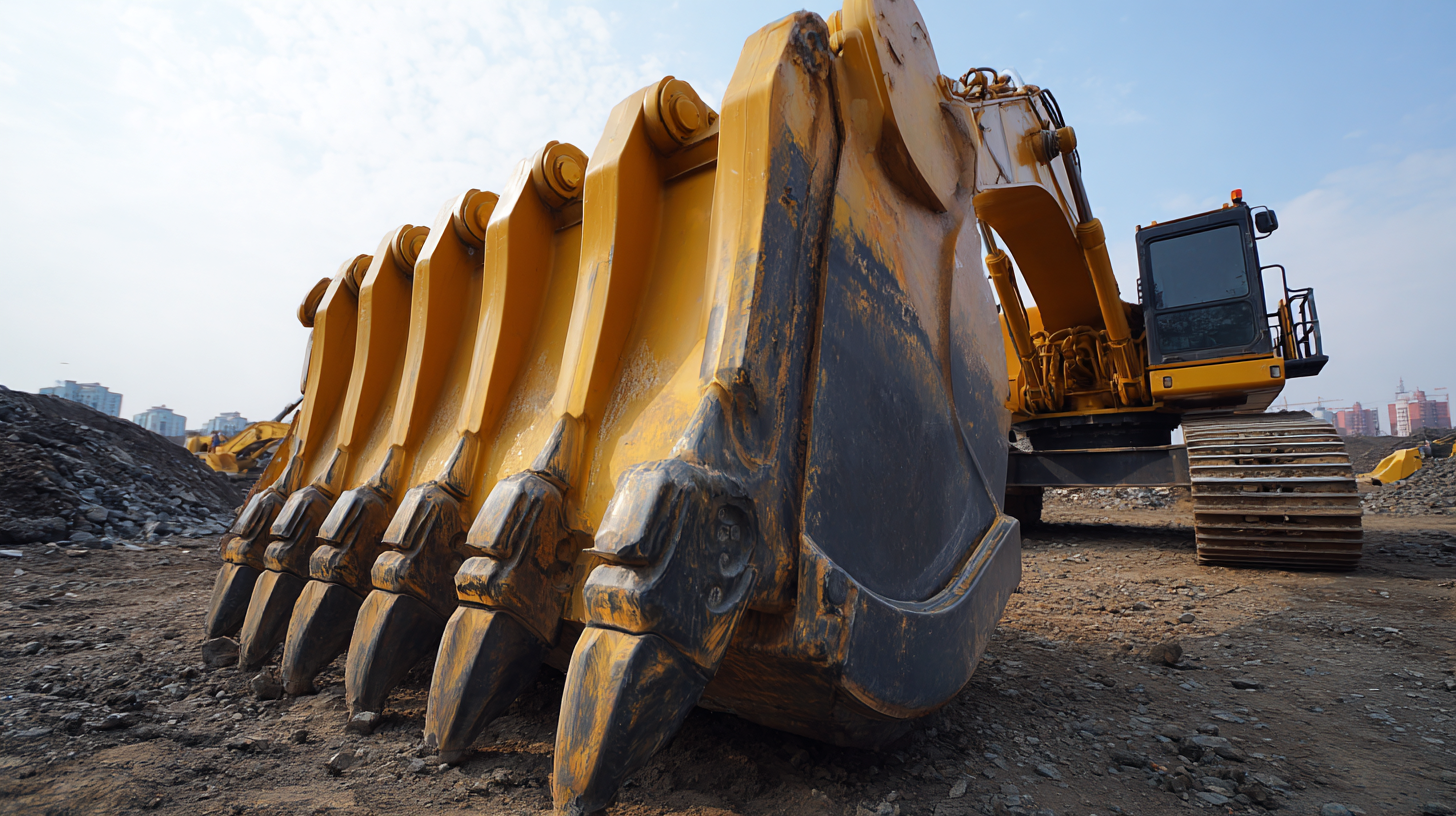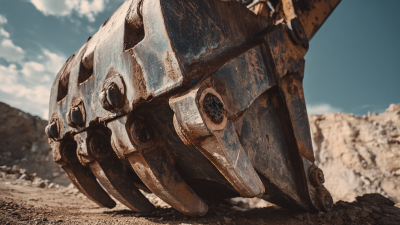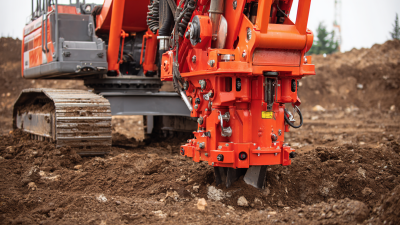 +86 13794985240
+86 13794985240
Leave Your Message
-
 CONTACT NUMBER
CONTACT NUMBER -
 CONTACT NUMBER
CONTACT NUMBER -
 CONTACT NUMBER
CONTACT NUMBER



In the ever-evolving construction and excavation industry, the choice of bucket teeth plays a crucial role in enhancing productivity and reducing operational costs. According to a report by the National Stone, Sand & Gravel Association, improper attachment choices can lead to a staggering 25% increase in downtime due to wear and tear, highlighting the significance of selecting the right bucket teeth for your excavator needs. Moreover, a study by the Equipment Manufacturers Association revealed that optimized bucket teeth can improve digging efficiency by up to 30%, allowing for faster project completion and increased profitability.

Therefore, understanding the various types of bucket teeth available, their material composition, and their specific applications is essential for operators looking to maximize their excavator's performance and lifespan. This ultimate guide aims to provide valuable insights and tips to help you make informed decisions when choosing the best bucket teeth for your projects.
When it comes to excavators, selecting the right bucket teeth is crucial for optimizing performance and efficiency. There are several types of bucket teeth, each designed for specific tasks and materials. For instance, standard pin-on teeth are versatile and suitable for a variety of excavating jobs, making them a common choice for general use. On the other hand, rock teeth, often featuring a sharper profile, are specifically designed for breaking through hard surfaces like rock and concrete, ensuring durability in challenging environments.
Additionally, bucket teeth come in different materials and designs, reflecting their intended use. For heavy-duty operations, heavy-wear teeth can be beneficial, as they enhance longevity and reduce the frequency of replacements. Meanwhile, bolt-on teeth offer ease of maintenance, allowing operators to quickly replace worn-out teeth without extensive downtime. Understanding the distinctions between these bucket teeth types will empower excavator operators to make informed choices, ultimately increasing productivity and minimizing operational costs.

When it comes to selecting the right bucket teeth for your excavator, several key factors come into play. First and foremost is the type of material being excavated. Different soils and rock formations require specific tooth shapes and materials to maximize efficiency and minimize wear. For instance, if you're working with hard rock, you might opt for heavy-duty teeth made from high-strength steel, while softer materials like clay could be handled by lighter, more versatile teeth designs.
Another critical aspect to consider is the tooth configuration and compatibility with your existing bucket. Bucket teeth come in various designs such as flat, pointed, or serrated, each serving differing purposes depending on the task at hand. It's essential to match the tooth style to your project needs and ensure that they easily fit your excavator’s bucket. Additionally, evaluating the maintenance requirements and cost-effectiveness of the chosen teeth can greatly influence overall operational efficiency and longevity of the equipment. Adequate attention to these factors will lead to a more productive and streamlined excavation process.
 When it comes to selecting bucket teeth for your excavator, understanding the differences between materials is crucial.
Steel bucket teeth are widely used due to their cost-effectiveness and adequate performance for standard digging tasks.
They offer flexibility and resilience, making them suitable for general-purpose applications.
However, steel may wear down faster in abrasive conditions, requiring more frequent replacements.
When it comes to selecting bucket teeth for your excavator, understanding the differences between materials is crucial.
Steel bucket teeth are widely used due to their cost-effectiveness and adequate performance for standard digging tasks.
They offer flexibility and resilience, making them suitable for general-purpose applications.
However, steel may wear down faster in abrasive conditions, requiring more frequent replacements.
On the other hand, tungsten carbide bucket teeth are known for their exceptional durability and resistance to wear.
These teeth are ideal for heavy-duty operations where constant grinding against tough materials occurs. The higher initial cost is often offset by their prolonged lifespan and reduced maintenance needs, which can lead to greater efficiency in the long run.
Tips: Always consider the specific conditions and materials you’ll be working with when selecting bucket teeth.
For applications involving abrasive or rocky soils, investing in tungsten carbide may be worthwhile.
Additionally, regularly inspect and maintain your bucket teeth to optimize performance and avoid downtime during projects.
When selecting bucket teeth for excavators, understanding the types and their impact on excavation efficiency is crucial. Different teeth designs serve distinct purposes, tailored for specific soil conditions and operational needs. For instance, a pointed tooth may be ideal for penetrating hard ground, while a flat blade might be better suited for moving loose material. An informed choice of bucket teeth not only enhances the efficiency of excavation tasks but also reduces wear and tear, extending the lifespan of both the bucket and the teeth.
The performance of heavy machinery, such as wheel loaders, is significantly influenced by the choice of bucket configurations and teeth. While general-purpose buckets can handle various materials, they may not be optimal for all scenarios. Specialized buckets with appropriate teeth can significantly improve productivity in specific applications, such as digging or grading. By understanding industry standards and the function of different bucket teeth types, operators can enhance their excavation efficiency, achieving better results and saving on operational costs.
This bar chart illustrates the excavation efficiency (in percentage) of different types of bucket teeth. It shows how the type of bucket teeth impacts the overall performance of excavators in various soil conditions.
When it comes to excavation projects, the choice of bucket teeth is critical for maximizing efficiency and performance. In case studies from various industrial applications, different terrains and materials required tailored bucket teeth designs. For instance, in a heavy-duty mining operation, a project utilized high-abrasion-resistant teeth that enhanced penetration and durability, significantly reducing downtime and maintenance costs. These teeth provided the robust performance needed to handle extreme conditions while ensuring optimal material extraction.
Conversely, for a landscaping project that involved softer soils and less demanding wear conditions, the team opted for lightweight, general-purpose teeth. This choice facilitated maneuverability and precision in delicate excavation tasks. The flexibility in design allowed for better surface finishing, which was essential for the project's aesthetic requirements. These case studies illustrate that understanding the specific needs of each excavation task is paramount in selecting the appropriate bucket teeth, ultimately driving success across diverse applications.






